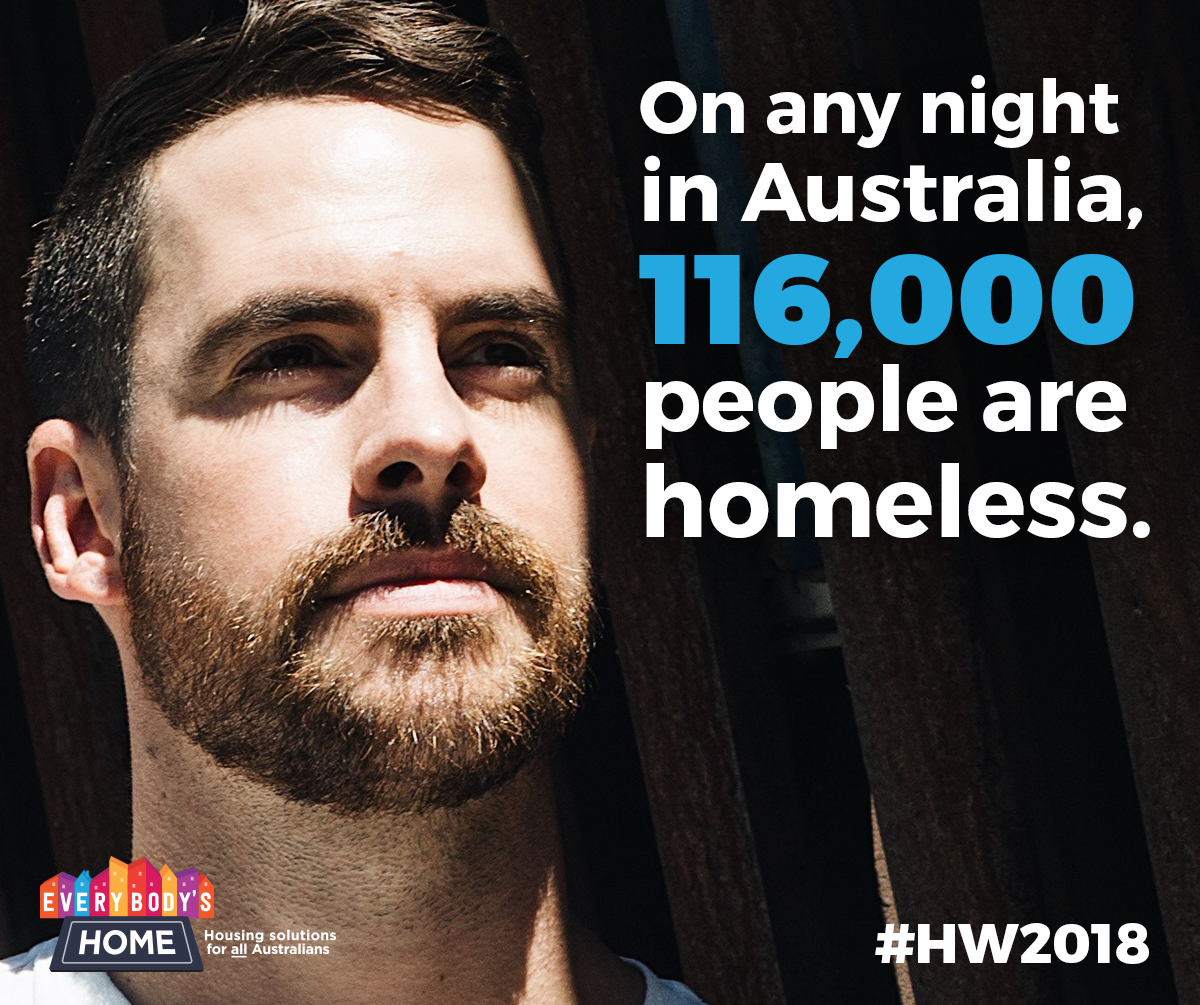Author Archives: chia_adm
#HW2018
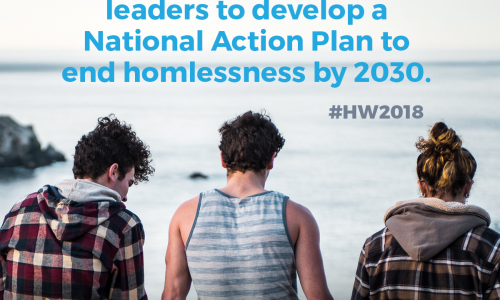
Partnership approach to deliver more housing

The Victorian Government’s moves to work in partnership with the community housing industry through a new Victorian Social Housing Growth Fund and Low Cost Loans initiative has been welcomed by the industry’s state peak body.
The Community Housing Industry Association Victoria’s (CHIA Vic) CEO Lesley Dredge says, with the waiting list for social housing in Victoria sitting at 42,162 households, action on creating more affordable housing supply is urgently needed and the government’s moves to increase the impact of the community housing sector via the growth funds and low-cost loans, are significant.
To resolve unmet housing need by 2051, factoring in population growth, Victoria must add another 3,000 social housing properties each year to house our most disadvantaged, plus another 3,000 affordable rental properties each year for low income households facing housing stress.
When the government’s $1b Social Housing Growth Fund is fully operational it will provide about $60 million annually, with the aim of adding only 2,200 social housing places over five years, an important step forward, Ms Dredge says.
‘The $1bn fund is the first time there has been a long-term, ongoing commitment to produce an income stream to be used for social housing in Victoria,’ Ms Dredge says.
‘We are hopeful that once this architecture is embedded, more funding will be allocated by subsequent governments; enabling community housing organisations to leverage the funds and plug the gap between the cost of delivering new social housing and the rents they are able to charge their low income tenants.’
The Low Cost Loans initiative for community housing organisations is also a step in the right direction, Ms Dredge says.
‘Making loans more affordable will assist some community housing organisations to leverage funds to be used to house more Victorians in need,’ Ms Dredge says.
Click here for details on the Victorian Social Housing Growth Fund and the low interest loans and guarantees.
Homeless shelter pops up in Melbourne
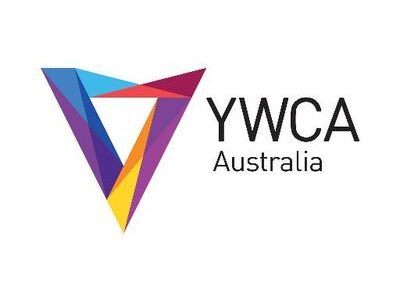
Even red tape can come with a silver lining, as proven by a delayed development site that has been used to create a homeless pop up shelter in the interim.
When red tape held up its development plans, CaSPA Care rented a former nursing home in South Melbourne to the YWCA for a nominal fee. The YWCA has turned the site into a pop up shelter by harnessing the goodwill of some key businesses.
Building company Metricon cleaned and refurbished the building then added an industrial kitchen and laundry; interior decorating company Guest Group furnished the pop up and social enterprise Two Good provided food.
The shelter can house 38 women – and is already receiving 40 applications a week.
Living cities forum hears tenants’ views
https://www.youtube.com/watch?v=WYaJKKU34aM&t=7s
A high-level gathering of planners, designers and architects from around the world has been given insight into the possible development of Melbourne from the perspective of a community organisation and its tenants.
Melbourne-based Housing Choices residents and property team members created a video on their views on Melbourne’s future for the 2018 Living Cities Forum. The forum tackles a number of big questions around architecture and issues facing Melbourne and global cities.
Housing Choices’ video provided a unique opportunity for community housing organisations and tenants to reach the people who ultimately plan, design and build the cities and suburbs we live in.
Bridge Housing’s new A Bridge to Work employment initiative with partners CoAct is already putting residents into jobs.
Cholok is a Bridge Housing tenant who joined the Bridge to Work program in July 2018. She had recently migrated to Australia from Sudan and was looking to find part time employment.
After consultation and review of her work history, we decided to approach an employer with whom she had previously worked on a contract basis. She successfully negotiated another three-month contract with LUSH Cosmetics, working in the production warehouse with an option to extend to six months.
She is very happy to have found employment with them again and we hope to help her secure a permanent role as we support her in her contract.
Cholok is very personable and diligent in her work and is looking to possibly become a supervisor during her new placement as she brings with her experience and expertise from her role last year. Cholok has great potential, and with ongoing coaching and mentoring through her contract, we are hopeful that LUSH will provide her with a permanent position.
-courtesy of Bridge Housing
The Australian Institute of Health and Welfare (AIHW) has released its findings into the most visible tip of the housing crisis iceberg – rough sleepers.
The report makes for grim reading, reinforcing the message from Finland that addressing homelessness requires a supply of affordable housing.
Financial difficulties (53 per cent) and housing stress (23 per cent) were the main drivers for rough sleeping for one-time users of specialist homeless services. While 36 per cent of this group needed long term housing, only 6 per cent were provided with it.
The situation of repeat users – ‘cyclers’ – was much worse. Unsurprisingly, housing affordability stress (59 per cent) and financial difficulties (88 per cent) drove them to repeatedly present to specialist homeless services.
Researchers identified five typical pathways into adult homelessness: housing crisis; family breakdown; substance abuse; mental health; and, transitioning from being homeless in youth (‘youth to adult’).
It also found two in three rough sleepers were male (65 per cent), aged over 35, and 19 per cent were Aboriginal.
Gloomy predictions for end of NRAS

As reported in The Fifth Estate
NRAS, the National Rental Affordability Scheme, was meant to assist the housing affordability crisis. Trouble was it had a beginning and an end, with the end coming way too soon for too many.
The first tranche of properties subsidised under the National Rental Affordability Scheme will lose the subsidy paid to investor owners this December. For the community housing sector that means hundreds of affordable properties may soon become not-so-affordable for low and medium-income tenants.
Horizon Housing chief executive Jason Cubit said it is that expected low-income tenants will be pushed out of properties when NRAS properties revert to market rents or are put up for sale.
“The industry has known about the end of NRAS for a number of years now. We’ve been hoping that a replacement scheme would be announced – but it hasn’t,” he said.
“What we are expecting to see once NRAS wraps up, is an increase in rent prices across properties leaving the NRAS scheme of around 20 per cent. This means if you’re currently paying $336 a week, when that incentive expires that could potentially go up to at least $420 a week – a considerable jump when you consider many of these tenants are already struggling to get by.”
The scheme was designed to provide the subsidies for just 10 years, in exchange for rents being set at 20 per cent below market rate, and the end date for the first batch will come not far ahead of reports released this week showing that a growing number of lower and middle income households are struggling with stagnant wages growth, increasing rates of insecure or part-time employment, housing stress and high energy bills.
This week’s HILDA, or Household Income and Labour Dynamics report, from the Melbourne Institute shows that affordable housing advocates are disappointed with the federal government’s newly-released National Housing and Homelessness Agreement.
Among the deficiencies, they say, are that there is no replacement for or extension of the NRAS scheme, despite hopes to the contrary.
Chief executive of the Community Housing Industry Association, Peta Winzar, told The Fifth Estate that at this stage, no-one is sure how many of private investors with NRAS properties will choose to stop providing them as affordable rentals and instead choose to put them on the market and realise capital gains they might have.
Some may choose to hold them as rental properties, she says, but one of the challenges for the sector is lack of information on what incentives there may be to do so.
Legislation before the Senate proposes a 10 per cent capital gains tax discount for an investor who chooses to offer their property at below market rent through a community housing provider.
However, Ms Winzar says the legislation leaves it up to the states and territories to define their own eligibility requirements and the discount on full market rent that will qualify a property as an affordable rental.
Currently, there are 36,721 allocated NRAS subsidies in play, she says. Around 1,850 of these are properties yet to be delivered.
Of the allocated subsidies, 190 properties will exit the pool this December. The following year it will be around 1220. The numbers grow larger in each subsequent year until the expiry of the final tranche of subsidies in 2026.
While the figure for the first 12 months is not a “noticeable reduction” the concern is that the number will grow.
Ms Winzar said the impact of the loss of NRAS will vary across the country, with Queensland likely to be hardest-hit. Around 10,000 NRAS properties are in the Sunshine State, and only 6500 in NSW with around two-thirds of those in the metropolitan area.
According to the new National Housing and Homelessness Agreement, that requires the annual publishing of housing strategies, Queensland said that “meeting demand for housing and homelessness services within existing resources remains a significant challenge”.
As at 30 April 2018 there were 16,761 applications on the state’s social housing register. The state government is considering the introduction of inclusionary zoning on government-owned land to help remedy the shortfall.
“An agreed approach to implement inclusionary requirements will be developed with Economic Development Queensland and Properties Queensland in 2018-19,” the document says.
However, there are a couple of possible flaws in this approach. The first is that, like NRAS, inclusionary requirements do not necessarily mean the properties remain affordable in perpetuity.
Ms Winzar said that for families especially, having certainty and security with an affordable rental is the ideal situation – for example, the 14 to 15 years it takes to see a child through schooling.
“Perpetuity is an advantage.”
It is also an advantage in terms of attracting investors, she said.
In the US the low income housing tax credit, because it is enshrined in law as an ongoing measure, has been instrumental in creating an asset class in affordable housing.
She said this is what the sector had hoped would happen with NRAS – had it been extended.
It is also something it would like to see arise from measures such as value capture – that affordable properties are created and remain as such in perpetuity.
The second flaw with inclusionary requirements for private developers is that it can mean the state government is not able to maximise the number of affordable dwellings.
“Our preferred position is for the state governments to partner with community housing providers on an equity basis [for developments on public land],” Ms Winzar says.
This adds value in a number of ways. Firstly because CHPs are not-for-profit entities, they do not return profits to shareholders, but can tip the profit margin into delivering more properties.
Their status as charities also means they attract tax concessions.
Overall, partnering with a CHP for residential development on public land could see governments gain a 30 per cent uplift in the number of affordable properties compared to what would be generated by private development, Ms Winzar said.
She said the sector remains “always hopeful” there will be a successor program to NRAS.
“Clearly the need remains.
“With an election coming up… we hope both parties looking at how to increase and improve housing affordability.”
Horizon Housing
Horizon Housing chief executive Jason Cubit said Horizon’s portfolio will change as the subsidy winds down.
The organisation, headquartered in Queensland, is a member of Community Housing Limited, a not-for-profit operating nation-wide. Collectively CHL members hold 11,000 NRAS-subsidised properties.
Horizon has 1500 NRAS properties under its own management, about 900 of them owned by investors and the balance by the organisation itself.
Potential evictions of tenants are very much on the cards, although he said Horizon is working with investors and tenants to try and find a solution.
As part of its strategy, it also operates a licensed real estate agency for subsidised properties.
“We are working to find out a rent somewhere between the market rent and the subsidised rent with investor owners,” he said.
But he does not think most investors will go “all the way” to keeping rents at the 20 per cent below market rent set by NRAS.
There will be five properties it manages exiting the scheme this December, and then the numbers “start growing” significantly over the following years.
Mr Cubit said a mass exodus of affordable housing tenants from these properties would cause just as much angst for investors, who are likely to experience higher vacancy rates and lower returns as a result.
“We know from experience that investors experience high demand for affordable housing properties, but as the subsidy expires, so too will investors’ ability to retain long-term tenancies.”
He expects in high-value locations, investors are likely to put properties on the market to obtain the considerable capital gain the properties have accumulated.
In lower value locations, such as the outer suburbs and newer estates, there might be a “real influx of vacancies” as tenants exit properties that are no longer available at lower rents.
This could have a real impact on rental values and home values for other properties in the area, he said.
Horizon is also, along with Social Ventures Australia, a shareholder in Australian Affordable Housing Securities, a licensed financial services provider that advises on affordable housing financing.
Advising on NRAS compliance and investment has been a major part of its business. Mr Cubit said that with the scheme coming to a close, AAHS is already planning out strategies for the future.
“We are looking at REITs and shared equity schemes to attract financing,” he said.
On the proposal for inclusionary requirements for private developments on public land in Queensland, Mr Cubit said the government should put the land development opportunity with a charitable organisation.
“We have a proven track record that shows we are as big and strong a developer as anyone,” he said.
Affordable housing needs to be developed to be kept in perpetuity, he said.
“We support the strategy of getting under-utilised land used for residential development, but there needs to be a long-term commitment [to affordable housing].”
Essentially, a state-owned asset is being privatised when it is handed to private development, he said.
If private developers are going to benefit from these types of developments, there should be some long-term public benefit gained from the increased density, or financial contributions flowing back to organisations like CHPs.
Community Housing Industry Association NSW
Deborah Georgiou, acting chief executive for Community Housing Industry Association NSW, said the HILDA 2018 report highlighted the need for action in NSW on affordable housing.
The report showed that housing stress – where payments such as rent or mortgage comprise more than 30 per cent of household income – is at an all time high in Sydney.
She said skyrocketing housing prices and rents were hitting low income earners, single parents and older renters hardest.
“There are very, very few affordable rental options in Sydney for people surviving on a minimum wage or government support,” Ms Georgiou said.
“Yes, real estate prices in Sydney have dropped slightly, but whether a house is 12 or 11 times the average income is immaterial when you’re a renter struggling just to keep a roof over your head and your income hasn’t gone up.
“It’s putting pressure on people, and it’s putting pressure on our social housing safety net, which just doesn’t have enough homes to support people who need urgent relief.”
Modelling for CHIA NSW shows that NSW needs 12,000 new social and affordable homes a year to keep place with current demand and expected population growth.
“Between 2012 and 2020, 18 of our largest community housing providers will have delivered $1 billion in new projects in 34 local government areas, with capacity to deliver much more,” Ms Georgiou said.
“The NSW government has some programs in place to deliver more social and affordable homes on the ground but we need a real commitment at all levels of government to secure planning reforms and more funding.”
–article courtey of The Fifth Estate
Launching a new CEO
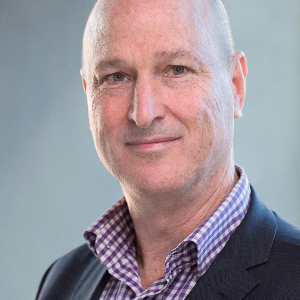
Launch Housing, one of Victoria’s largest providers of housing and homeless support services, has announced that current Managing Director of Victoria Legal Aid, Bevan Warner, will commence as its new Chief Executive Officer on 29 August 2018.
Launch Housing Chair Neil Chatfield says, ‘We are delighted to announce Bevan’s appointment. His wealth of experience working with government and communities to advance human rights in meaningful and practical ways, makes him the ideal leader to continue the transformation and long-term development of Launch Housing.
‘He is an experienced Chief Executive and skilled advocate, who has modernised and improved services for the 90,000 plus clients assisted by the legal assistance sector each year.
‘Homelessness is not a condition that can’t be fixed. It is a problem that can be solved with the right policies and priority attention from government and the wider community. An individual life of dignity and the ability to sustain productive employment, requires all people to have access to safe, secure and affordable housing.’
Mr Warner says, ‘People’s experience of neglect, financial insecurity, trauma and ill health can propel them, often unfairly, into the justice system and sometimes into homelessness. We can do better as a community. I am thrilled to be joining Launch Housing, to continue its transformation and long-term development, and to provide much needed services to people in acute need.
‘Launch Housing is an organisation I have long admired, and I look forward to meeting staff, clients, to learning more, and applying my energies and skills to help achieve its mission of ending homelessness.’
–article courtesy of Launch Housing
Short stay accomodation inquiry

The Tasmanian Legislative Council is holding an inquiry into the the short stay accommodation industry in Tasmania.
Shelter Tas is currently consulting with members and will be making a submission.
If your or your organisation would like to make a submission, see the instructions on the Parliament of Tasmania website.
Submissions should be received by no later than close of business on Friday, 10 August 2018.
– courtesy of ShelterTas
PM identifies housing shortage as key issue in NT

During a visit to Tennant Creek, in the Northern Territory, the PM Malcolm Turnbull acknowledged the pressing need for more housing.
‘The lack of housing is the biggest single issue that has been described in every encounter,’ Mr Turnbull stated during the end of the second day of his NT visit.
Whilst the Federal Government announced $550 million funding to support the NT Government’s remote Indigenous Housing Plan back in April, it is yet to make any committments with the South Australia, Western Australia, and Queensland governments in relation to indigenous housing.
WHL awarded Housing Association status
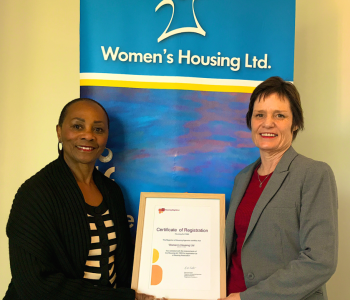
In an exciting development, the Victorian Housing Registrar has approved Women’s Housing Limited’s (WHL) application to become a Housing Association.
WHL’s CEO, Judy Line says the status change from Housing Provider to Housing Association, which has been 18 months in the making, is significant: ‘Becoming a Housing Association presents a wonderful opportunity for WHL and our clients – present and future.
‘As a Housing Association, WHL will have the capacity and resources to be able to provide more specialist housing for women and children.
‘For women in need, it’s about providing housing security and also a pathway out of disadvantage.’
Community Housing Industry Association Victoria Chair Haleh Homaei congratulated WHL on the news.
‘It’s a huge achievement for WHL and it’s great to have a specialist women’s housing provider within the pool of Housing Associations.’
The Registrar of Housing Agencies, Bernard Gastin, approved Women’s Housing Limited’s application for a change in category to a Housing Association under the Housing Act 1983, based on its demonstrated capacity to grow at scale through a strong track record of consistent housing growth in the past and a future growth strategy that will continue this trend.
Whilst Registered Housing Providers vary in size, they primarily manage rental housing portfolios for other parties, such as the Director of Housing (DoH). Whilst some own properties, their growth is small scale compared with housing associations.
‘WHL specialises in the provision of affordable housing for women and children and has grown its asset base of $0.3 million in 2008 (with no owned property) to $54 million by 30 June 2019. Tenancy numbers have grown from 108 to 400. This scale is consistent with Tier 1 housing provider status under the National Regulatory System for Community Housing,’ Mr Gastin says.
‘WHL has also established a pipeline of projects, including a new development in Bayswater and partnership with major developers such as Lendlease. These projects will continue to increase the supply of affordable housing by approximately 60 units by 2025-26. The growth is achieved through WHL’s own capital investment as well as leveraging generous developer land contributions and without relying solely on government funding.’
The broader Housing Registrar team also congratulated WHL on achieving this important milestone.
‘We will continue to work closely with WHL to ensure the regulatory requirements of a Housing Association are met.’
WHL joins the other nine Registered Housing Associations in Victoria: Aboriginal Housing Victoria Limited, Common Equity Housing Limited, Community Housing (Vic) Limited, Housing Choices Australia Limited, HousingFirst Limited, Haven; Home, Safe Limited, Beyond Housing Limited, Unison Housing Limited and Wintringham Housing Limited. There are 30 Registered Housing Providers in Victoria.
Article on the Grenfell Tower fire a must read

Andrew O’Hagan’s incredibly detailed and well-researched article on the Grenfell Tower fire is a must read for everyone who works in social housing. The article in The London Review of books offers a compelling insight into the lives of those caught up in the disaster and the aftermath.
New COO for Haven

Haven; Home, Safe has promoted Trudi Ray to the newly created position of Chief Operations Officer (COO) as part of a restructure of Victoria’s only fully integrated homelessness services and affordable housing providers.
Prior to being appointed COO, Ms Ray was the Executive Director for Operations in the southern region of Victoria for two years after serving as Executive Director Corporate Services from 2010 to 2016.
HHS Chief Executive Officer Ken Marchingo AM said last week the appointment followed the recent departure of Executive Director for Operations (North) Niall Hensey after nine years’ service.
‘This created an opportunity to deliver a different structure that more closely supports the strategy of the Board and the organisational requirements into the future,’ Mr Marchingo said.
‘Trudi has worked closely with me for over 14 years and is an outstanding and valued member of the Executive Management Team.
‘I look forward to working with her and the Executive as we drive the next stage in the organisation’s evolution and growth.’
Ms Ray said she was excited about the opportunity to work with the General Managers and staff to turn HHS’s strategy into operational and financial success.
‘With single IT housing systems and the development of a new CRM, we are in the process of being fully data-driven where the business can be guided by real-time data,’ Ms Ray said.
‘Operations across the organisation are complex and diverse and we have a genuinely talented and committed team who daily work towards preventing homelessness and giving people a place to call home.
‘The Board has set a great strategy and with my fellow executive we will continue to keep our strategy front and centre, ensuring we build towards more homes, more supports, more partnerships and more capacity,’ she said.
Ms Ray said that while there had been significant investment and commitments made in recent times, Victoria’s overall social housing stock was on the decline when measured as a proportion of all housing.
‘Wherever you look, in metropolitan Melbourne or in regional and rural Victoria, there is a chronic shortage of affordable and available rental housing which has significant social and economic costs not just to the individuals and families but also communities,’ she said.
HHS as always will continue to work with the sector and all levels of government to advocate for the housing and support needed.
Ms Ray will maintain offices in Preston and Geelong and conduct regular staff and stakeholder meetings in the Loddon and Mallee offices in Bendigo and Mildura.
The restructure will include the creation of two Executive General Manager positions to oversee day-to-day operations in the south and north of the state reporting to the new COO.
ABOUT TRUDI RAY
Trudi Ray has been responsible for growing and managing Haven; Home, Safe’s support services and housing portfolio across the northern and eastern suburbs of Melbourne in addition to expanding HHS’s footprint in the Barwon South West Region since 2016 in her former role of Executive Director Operations (South).
Over the past two years, HHS has secured more homes and supports for women and families fleeing family violence and those that are homeless working in concert with many support partners also delivering on a 17-unit development in the centre of Geelong.
Trudi’s strong work ethic and diverse management and leadership skills developed over the past 14 years has stood her in good stead as she takes up the Chief Operations Officer role.
Trudi has worked out of both our Geelong and Preston offices and prior to relocating to Geelong in 2015, Trudi was HHS Executive Director Corporate Services responsible for the agency’s Human Resources, IT, Risk Management, OH&S and communications programs
In November 2016 Trudi was elected to the Board of the Community Housing Federation Victoria (now CHIA Vic) and believes in advocating strongly for those most vulnerable in our community, those that are homeless, fleeing family violence or those in housing crisis.
Trudi understands the complexities of vulnerable communities and her passion for social justice and strong community spirit extends beyond the workplace having been the youngest women to be elected a local government councillor in Regional Australia in 2004.
She is a Justice of the Peace, Interim Chair Victorian Branch of Australasian Housing Institute of Australia, a member of the Manningham Council Healthy City Advisory Committee, and has been invited to participate on the Hume Moreland Housing Action Group and Intervening early to prevent homelessness working group with DHHS.
Trudi has received certification two years running into the AHI certified housing professional Level 3, one of only seven housing professionals in Victoria to do so.
Ranked in the top 15 per cent of all La Trobe University graduates in 2013, Trudi is now mentoring other MBA students through the La Trobe Alumni.
-article courtesy of Haven; Home, Safe

